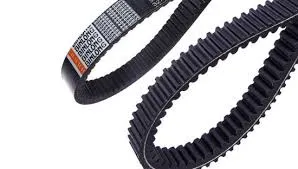- Arabic
- French
- Russian
- Spanish
- Portuguese
- Turkish
- Armenian
- English
- Albanian
- Amharic
- Azerbaijani
- Basque
- Belarusian
- Bengali
- Bosnian
- Bulgarian
- Catalan
- Cebuano
- Corsican
- Croatian
- Czech
- Danish
- Dutch
- Afrikaans
- Esperanto
- Estonian
- Finnish
- Frisian
- Galician
- Georgian
- German
- Greek
- Gujarati
- Haitian Creole
- hausa
- hawaiian
- Hebrew
- Hindi
- Miao
- Hungarian
- Icelandic
- igbo
- Indonesian
- irish
- Italian
- Japanese
- Javanese
- Kannada
- kazakh
- Khmer
- Rwandese
- Korean
- Kurdish
- Kyrgyz
- Lao
- Latin
- Latvian
- Lithuanian
- Luxembourgish
- Macedonian
- Malgashi
- Malay
- Malayalam
- Maltese
- Maori
- Marathi
- Mongolian
- Myanmar
- Nepali
- Norwegian
- Norwegian
- Occitan
- Pashto
- Persian
- Polish
- Punjabi
- Romanian
- Samoan
- Scottish Gaelic
- Serbian
- Sesotho
- Shona
- Sindhi
- Sinhala
- Slovak
- Slovenian
- Somali
- Sundanese
- Swahili
- Swedish
- Tagalog
- Tajik
- Tamil
- Tatar
- Telugu
- Thai
- Turkmen
- Ukrainian
- Urdu
- Uighur
- Uzbek
- Vietnamese
- Welsh
- Bantu
- Yiddish
- Yoruba
- Zulu
تشرینی دووەم . 05, 2024 14:44 Back to list
alternator drive belt
Understanding the Alternator Drive Belt A Key Component of Your Vehicle
The alternator drive belt, often referred to as the serpentine belt, plays a critical role in the functioning of your vehicle's electrical system. Located in the engine compartment, this belt connects the alternator to the engine, allowing it to generate electricity. Understanding the importance of the alternator drive belt, how it works, and signs of wear can help you maintain your vehicle's performance and longevity.
What Is the Alternator Drive Belt?
The alternator drive belt is a rubber belt that loops around various pulleys in your engine, including the alternator, power steering pump, water pump, and air conditioning compressor. It is designed to transfer power from the engine crankshaft to these components. As the engine runs, it causes the belt to spin, which in turn drives the alternator and other accessories.
In modern vehicles, the serpentine belt is typically used because it is more efficient and requires less space than multiple V-belts. The serpentine design allows for one continuous belt to drive multiple components, simplifying maintenance and reducing the number of parts that could fail.
How Does the Alternator Drive Belt Work?
When your vehicle's engine is running, the crankshaft rotates, causing the alternator drive belt to move. This motion drives the alternator, which converts mechanical energy into electrical energy, charging the vehicle's battery and powering electrical systems like headlights, radio, and dashboard instruments. The smooth operation of the belt is essential; if it slips or breaks, the alternator will not function properly, leading to a drained battery and possibly leaving you stranded.
Signs of Wear and Tear
alternator drive belt

Over time, the alternator drive belt can wear out due to exposure to extreme temperatures, friction, and the natural aging of the rubber material. Here are some common signs that it may need to be replaced
1. Squeaking or Chirping Noises If you hear unusual sounds coming from the engine, it may indicate that the belt is slipping or misaligned. 2. Cracks or Fraying Visually inspect the belt for signs of cracks, fraying, or deterioration. Any visible damage is a strong indicator that it needs replacement.
3. Battery Warning Light If the battery warning light on your dashboard illuminates, it could mean that the alternator is not charging properly due to a belt issue.
4. Loss of Power If electrical systems in your vehicle begin to fail, such as the lights dimming or the air conditioning fluctuating, the drive belt could be the culprit.
Maintenance and Replacement
Regular maintenance of your vehicle should include inspecting the alternator drive belt. Following the manufacturer’s recommendations for replacement intervals can help prevent unexpected failures. If you suspect that your drive belt is worn, it’s a good practice to consult a professional mechanic who can conduct a thorough inspection and perform replacement if necessary.
In conclusion, the alternator drive belt is an essential component of your vehicle's operation. Understanding its function, signs of wear, and the importance of regular maintenance will ensure that your vehicle remains reliable and efficient for years to come. Taking proactive steps can save you from costly repairs and inconvenient breakdowns.
-
Korean Auto Parts Timing Belt 24312-37500 For Hyundai/Kia
NewsMar.07,2025
-
7PK2300 90916-T2024 RIBBED BELT POLY V BELT PK BELT
NewsMar.07,2025
-
Chinese Auto Belt Factory 310-2M-22 For BMW/Mercedes-Benz
NewsMar.07,2025
-
Chinese Auto Belt Factory 310-2M-22 For BMW/Mercedes-Benz
NewsMar.07,2025
-
90916-02660 PK Belt 6PK1680 For Toyota
NewsMar.07,2025
-
drive belt serpentine belt
NewsMar.07,2025

